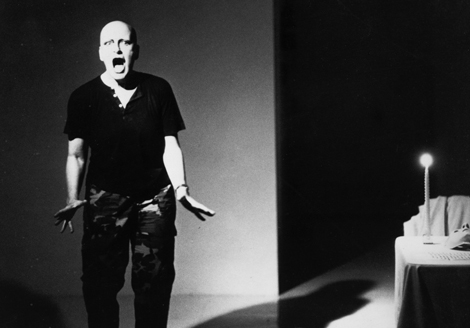Los Angeles has lost one of its most important and influential artists: Rachel Rosenthal. A pioneer of avant-garde theater and performance art, Rosenthal inspired several generations of actors, artists and activists. She was also a good friend and spiritual mother to many of us.
Rosenthal was mesmerizing in performance, brilliant and articulate as a public speaker, and—perhaps most importantly—a compassionate and caring human being. Never one to allow her powerful charisma to outshine her personal connection to her audience or students, Rosenthal remained humble and accessible even as she built a remarkably impressive legacy.
Committed to exploring the relationship between humans and the rest of the planet, she was an animal rights activist, a vegetarian and devoted companion to a remarkable menagerie of fur children, from Sasha, a stunning white Siberian-wolf hybrid, to the rat Tati Wattles (for whom she wrote Love Story in 1995). She was also an outspoken feminist: a longtime friend of famed feminist artists Judy Chicago, Cheri Gaulke, Mimi Schapiro and the late June Wayne; a participant in Woman Space Gallery (a converted laundromat on Venice Boulevard); and one of the first artists to perform at the Los Angeles Woman’s Building. Rosenthal often credited the Feminist Movement with the realization that she could be both a woman and a visual artist. Creative, beautiful and vital to the end, she taught an improvisational performance class the week before her death on May 10, 2015.
Rosenthal was born in Paris in 1926. Her Russian Jewish parents fled Europe at the beginning of World War II. She often recounted the story about her jeweler father hiding diamonds in his teenage daughter’s paint tubes when they emigrated. The family ended up in New York City where the young Rosenthal studied visual arts and theater. She became part of the avant-garde community that included composer John Cage and choreographer Merce Cunningham, as well as visual artists Robert Rauschenberg and Jasper Johns. In 1955, Rosenthal moved to Los Angeles, where she founded the experimental Instant Theatre. In 1980, she purchased the two-story studio on Robertson that she occupied until the end. It was there that she developed the TOHOBOHU! process, merging improvisational acting with painting, sculpture, photography, video, poetry and music.
Rosenthal was introduced to performance art as part of the Feminist Art Movement in Los Angeles, presenting her first solo performance art piece in 1975. Unlike many performance artists, whose work can be indulgently solipsistic, Rosenthal preferred to address global issues in powerful, poetic and often humorous ways. She performed at over 100 venues, from an international art fair in Germany to a theater festival in Yugoslavia, from Lincoln Center in New York to the Museum of Contemporary Art in Los Angeles. Rosenthal produced paintings, ceramics and illustrated books. She also acted for television (appearing in a Frazier episode in 1993) and film (starring in The New Age in 1994). She received dozens of grants and even more honors. She received the Vesta Award from the Woman’s Building in 1983 and an Obie Award in 1989. The College Art Association honored her outstanding achievements in 1991, the Women’s Caucus for Art in 1994. In 2000, Rosenthal’s adopted city declared her a “Living Cultural Treasure of Los Angeles.”
Rosenthal’s legacy will endure. Those of us who counted her a friend will miss her desperately.


